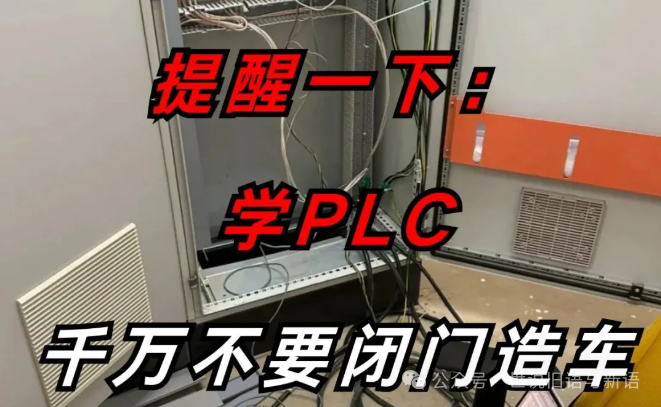
PLC File Management: Engineering Archiving Standards to Avoid Version Confusion!
Introduction
Hello everyone! Today I want to talk about a seemingly ordinary but extremely important topic — PLC Engineering File Management.<span>"Isn't it just storing a file? What's so difficult about it?"</span> I believe many engineers have thought this way, but reality can often be harsh: with one careless mistake, you could waste time searching for files, or worse, cause a production line shutdown!<span>By implementing standardized archiving management, over 90% of version confusion issues can be avoided!</span> Want to know how to do it? Let’s take a look together!
Why is File Management So Important?
Let’s first look at a few real scenarios:
-
The Nightmare of Emergency Repairs at Midnight: At 3 AM, the production line suddenly stops, you rush to the site, only to find that you can’t locate the latest program file and have to try old versions one by one…
-
The Chaos of Collaborative Work: Xiao Wang modified the recipe parameters, Xiao Li adjusted the PID control, and in the end, no one is sure which version is the latest.
-
The Hidden Dangers of Equipment Upgrades: An old device from three years ago needs to be replaced, but the original program has long been lost.
<span>"File management is not a technical issue, but a responsibility issue!"</span> A standardized archiving system is like buying insurance for your PLC program; it can save you in critical moments!
The Golden Rules of File Management
1. Unified Naming Standards
<span>"Good naming is half the success!"</span> I recommend using this universal template:
[Project_Name]_[Device_Name]_[Function_Description]_[Date]_[Version_Number].extensionFor example:
Drink_Line_Filling_Machine_Main_Program_20230815_V2.1.s7p<span>Red Alert:</span> Absolutely avoid vague names like “Final Version” or “Latest Version”!
2. Three Elements of Version Control
-
<span>Version Number Rules</span>: It is recommended to use the X.Y.Z format -
X: Major changes (e.g., equipment modifications)
-
Y: New/modified functions
-
Z: Bug fixes/parameter adjustments
-
<span>Change Log</span>: Each version must include a text file that records:## 2023-08-15 V2.1 - Modified filling quantity parameter (original value: 250ml, new value: 300ml) - Fixed conveyor belt emergency stop bug - Modifier: Zhang San -
<span>Blue Tip:</span>Using tools like Git/SVN for management is more professional!
3. Directory Structure Example
Project_Root_Directory/
├── 01_Original_Programs
├── 02_Modified_Versions
│ ├── V1.0
│ ├── V1.1
│ └── V2.0
├── 03_Documentation
│ ├── Electrical_Schematics
│ ├── Equipment_Manuals
│ └── Communication_Protocols
└── 04_Backup_Files
├── 2023_Quarterly_Backup
└── 2023_Annual_BackupAdvanced Management Techniques
1. Automated Backup Solutions
-
<span>Scheduled Backups</span>: Set up Windows Task Scheduler to automatically package critical files to the cloud weekly -
<span>Change-Triggered Backups</span>: Use scripts to monitor file modification times and automatically create backup copies -
<span>Red Alert:</span>Backup files must also have version management!
2. File Verification Mechanism
It is recommended to generate MD5 checksums for important files, for example:
Program_File: Drink_Line_Filling_Machine_Main_Program_20230815_V2.1.s7p
MD5_Checksum: a1b2c3d4e5f6...<span>Blue Tip:</span> You can use free tools like HashCheck to generate checksums!
3. Handover Standards
When personnel changes occur, the “Four-Step File Handover Method” must be executed:
-
Check the integrity of all files
-
Generate the latest file list
-
Demonstrate key programs in person
-
Both parties sign to confirm the handover
Common Problem Solutions
Q1: What to do if old project files are chaotic?
<span>"Three Steps to Fix the Problem":</span>
-
Collect all versions of files you can find
-
Sort by modification date
-
Use the PLC online comparison function to determine the latest version
Q2: How to prevent accidental modifications?
-
Set the file to read-only attribute
-
Use the locking feature of version control tools
-
<span>Red Alert:</span>Important file modifications must be confirmed by two people!
Q3: What to do if there are too many files taking up space?
-
Use differential backups (only back up changed parts)
-
Regularly archive old versions (but keep at least 3 historical versions)
-
Consider enterprise cloud storage solutions
Practical Case Sharing
A certain automotive parts factory once faced chaos in file management that led to:
-
Eight “latest” programs for the same device
-
Engineers wasted an average of 4 hours per week searching for files
-
One version error caused a 2-hour production line shutdown
After implementing standardized management:
-
<span>File search time reduced by 80%</span> -
<span>Version errors reduced to zero</span> -
<span>New engineers' onboarding time shortened by 50%</span>
Interactive Discussion
-
What is the most challenging file management problem you have encountered?
-
What file management methods does your company currently use?
-
For small projects, what do you think is the simplest management method?
Conclusion
<span>"Good file management won't make you an expert overnight, but poor file management will definitely turn you into a 'firefighter'!"</span> The methods shared today may seem a bit cumbersome, but once you develop the habit, you will find that they can save a lot of time and effort. Remember:<span>Behind every chaotic file, there may be a hidden production accident!</span>
I hope this article helps you establish a standardized PLC file management system. If you have any questions or want to share your experiences, feel free to leave a comment! Let’s work together to improve engineering management and create more reliable automation systems!
ShareSaveViewLike